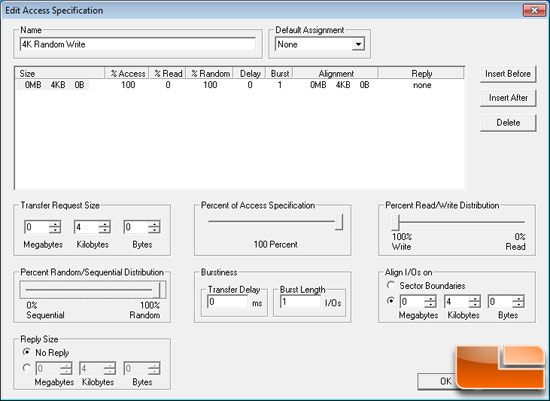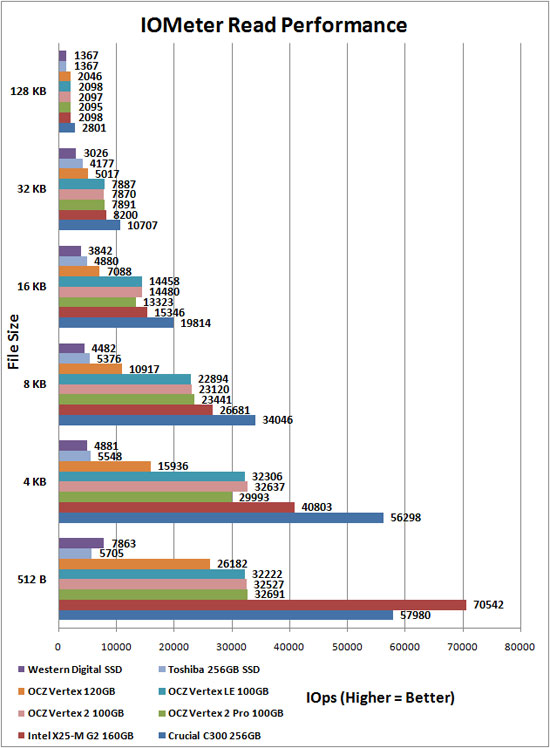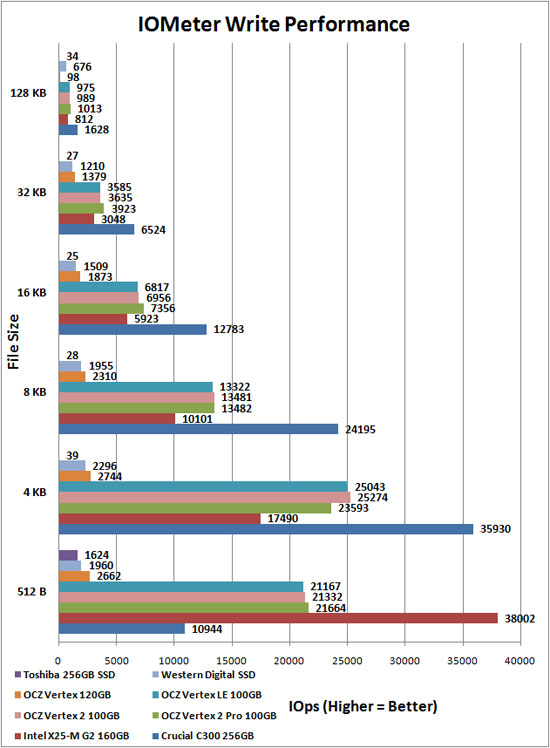OCZ Vertex 2 100GB SandForce SF-1200 SSD Review
IOMeter
Iometer is an I/O subsystem measurement and characterization tool for single and clustered systems. It was originally developed by the Intel Corporation and announced at the Intel Developers Forum (IDF) on February 17, 1998 – since then it got wide spread within the industry. Meanwhile Intel has discontinued work on Iometer and it was given to the Open Source Development Lab (OSDL). The project is now driven by an international group of individuals who are continuously improving, porting and extending the product.

Iometer version 2006.07.27 was used for testing and while we tested a dozen different file sizes we will be looking at the ones that are important to Windows users. In the Microsoft Windows operating systems many of the transactions are done at 512B/4kB/8kB/32kB/128kB, with the vast majority at 4kB, then 128kB / 512B, then the rest. Very few Windows applications use transfers larger than 128kB. We began the test by filling the drive completely full of data first and then testing 100% random IOPs in a 4KB region. We set the queue depth to 32 for this test.
Read Performance in IOps

Benchmark Results: IOMeter showed that the OCZ Vertex 2 has better 4K performance than the other Vertex series drives. We know that OCZ has optimized this drive for great 4K performance and it looks like they nailed it! The Crucial RealSSD C300 and Intel X25-M 24nm G2 drives are the only drives that have better 4K performance.
Write Performance in IOps

Benchmark Results: When it comes to write performance it is clear that nearly all of the drives have been optimized to perform best at the 4KB file size. The OCZ Vertex 2 again performed better than the OCZ Vertex Limited Edition and the Vertex 2 Pro. In fact, the OCZ Vertex 2 is the second fastest of the eight SSDs tested!

Comments are closed.